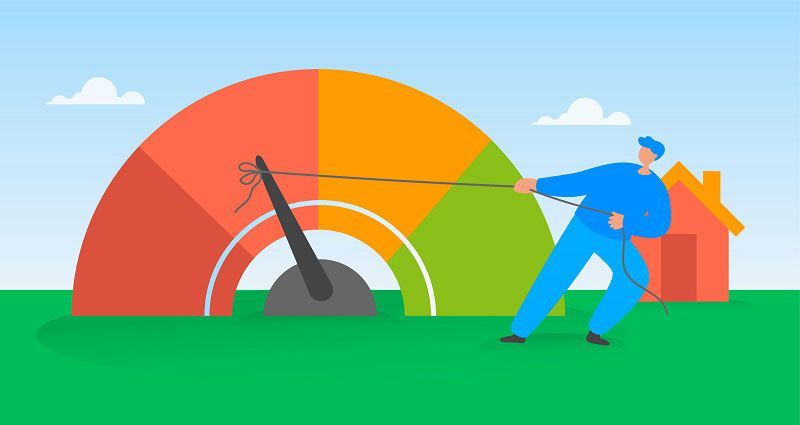We are an Equal Employment/Affirmative Action employer. We do not discriminate in hiring on the basis of sex, gender identity, sexual orientation, race, color, religious creed, national origin, physical or mental disability, protected Veteran status, or any other characteristic protected by federal, state, or local law.
How Do Texas Property Taxes Work in Texas?
As of 2022, Texas is now one of two states with a population of over 30 million people (the second being California). There are many reasons people are moving to the state, such as pursuing job opportunities and the cost of living.
Regardless of the reason behind the move, it's essential to understand Texas property taxes when buying Texas real estate. Let's explore the key factors you need to know.
The Role of Property Taxes
Property taxes in Texas are based on the appraised value of a property. Each county has an appraisal district, and they use market data and sales comparison trends to estimate worth of all parcels in the county. Once the value is established each year on January 1, the local tax assessor will then charge the property owner tax based on the cumulative taxing entities for that address.
An example of potential taxing districts are: county, city, emergency services, schools, and utility districts. Property taxes are then used to fund public schools, county roads, highways, police departments, etc.
Determining Market Value
Market value is not always the same as the appraised value. Market value is based on the current market trends in that area. In the residential market, which is where home buyers are considered, these factors include the size of the home, age, location, special amenities, features, etc.
The appraisal district will look back at sales in the last year, and what other homes similar in amenities sold for. Then an average is taken, and a current market value is determined.
When a property owner has exemptions on the property, which will be explained below, that reduces the appraised value in which the tax is calculated. At some point though, especially when properties change hands, the county appraisal district could , and usually does, return the value to the current market value for the new owner.
- Since the market value of homes can increase over time, it's important to understand that your property taxes can as well. However there's good news, there are ways to keep your property taxes down as your property grows in market value.
Appraised Value
For property owners receiving exemptions on their property, the appraised value becomes less than the market value.
This means that when the tax is calculated, it is from the lower appraised value , that has the exemptions, rather than the market value.
It is important to note, that properties without exemptions, usually those that are non - owner occupied or commercial, are the properties that are generally subject to the full tax. It's important to investigate with the county that you are buying, which exemptions you might be eligible for, and file the appropriate notices once you purchase the property.
Exemptions and Deductions
Texas offers home owners deductions on their property taxes if they meet certain criteria. Examples of exemptions are for homestead (your primary residence), disabled veterans, agricultural property, over 65 exemption, and surviving spouses.
In the case of a homestead exemption, which is the most popular, there is a reduction to the value of your home each year that the homestead exemption is in force. All in all , this equates to an approximate 15-20% reduction in your property taxes yearly. The time to file for this exemption is after you purchase the home. Its best to visit the county appraisal district in the county you are purchasing the home, to be sure you are aware of the exemptions available to you. Most counties in Texas are similar, but it is always wise to double check.
Be sure to ask at the closing to the title company, your realtor, or your lender, how this can be done so they can point you in the right direction. Here's a tip on how to file your Homestead Exemption.
Property Tax Collection Process
Each year, local governments will assess your property and calculate taxes based on the appraised value. Values are reassessed each January. In the spring, around March, the notice of value will be mailed to the home owner.
From there, you'll need to pay your property tax bill within a certain time frame set by the county. If you fail to pay on time, you may incur late fees or penalties. These will vary depending on the terms set by the local government.
Many homeowners choose to escrow for taxes and insurance in their payment. If you put less than 20% down payment, this escrow process is mandatory. It means that the tax and insurance will be bundled into your payment, and the lender will pay your taxes annually on your behalf. On the other hand, if you owe the property outright, or put down more than 20% and opt out of escrow, you are responsible to pay the taxes annually before January 31 each year.
- If you need to file a complaint, you can get in touch with the Texas Department of Licensing and Regulation (TDLR). They will walk you through the process and ensure your voice is heard. Keep in mind that filing a complaint doesn't always mean you will get a ruling in your favor. It's up to the local government to determine if your complaint is valid.
Working With a Local, Loan Professional
Reaching out to a local, industry professional can be helpful throughout this process. They have the knowledge and experience to help you understand the taxation system in Texas.
This could be a tax attorney, CPA, realtor, or lender with plenty of experience in real estate.
They may be able to help you find ways to reduce your taxes and remaining compliant with laws and regulations. Everyone's situation is different, which is why having access to professional insight is so valuable. If you have any questions please get in touch with us here, or download our handy pre-approval checklist here.











